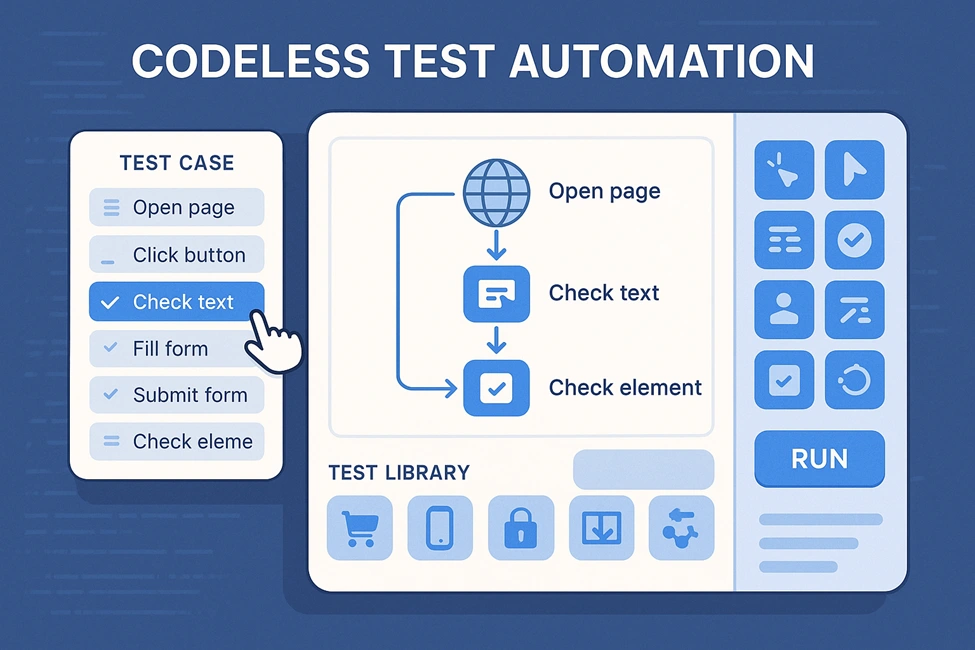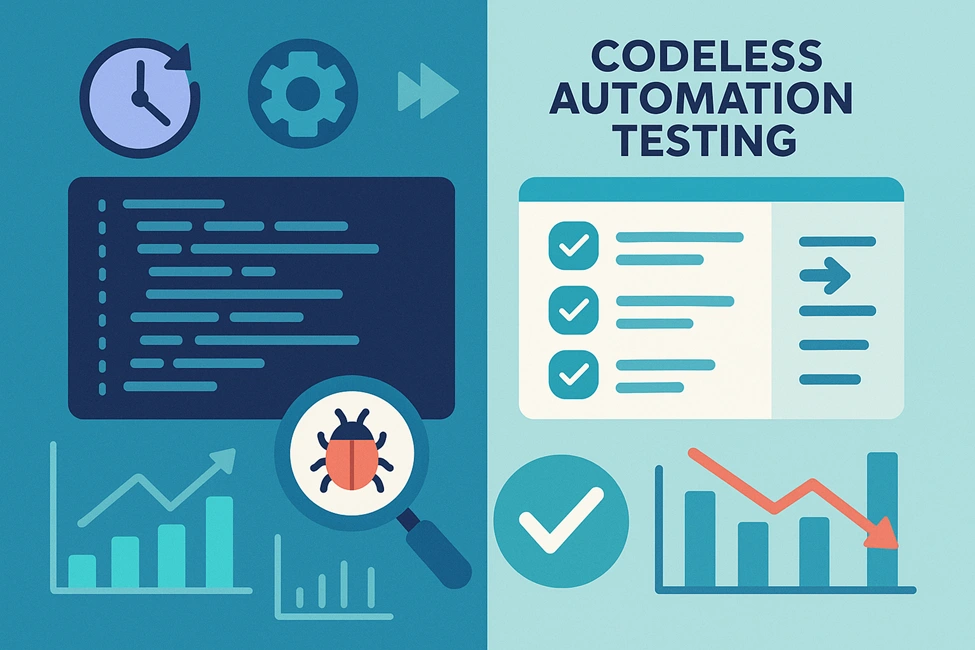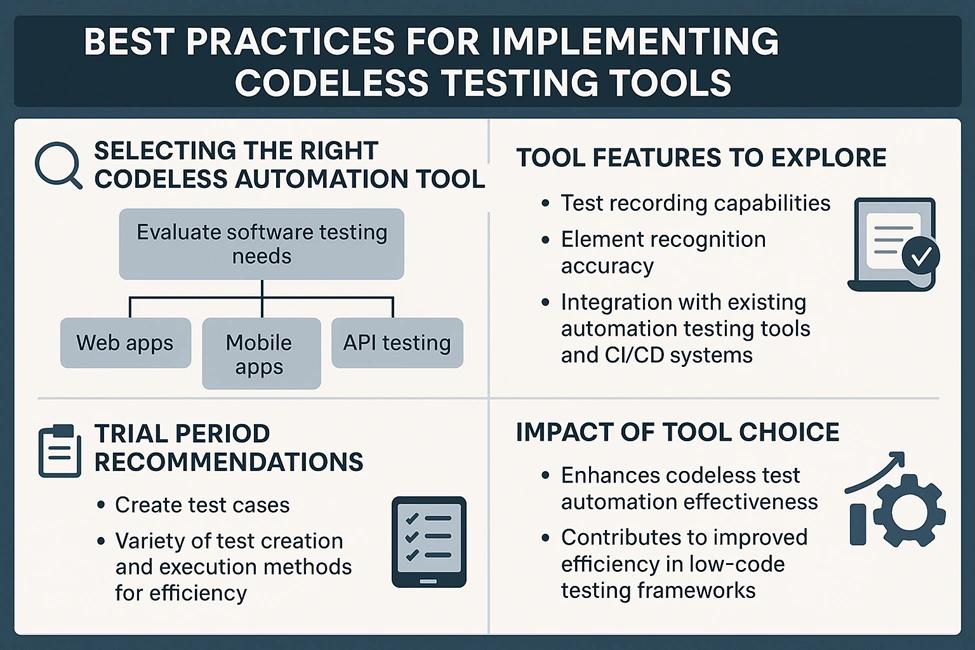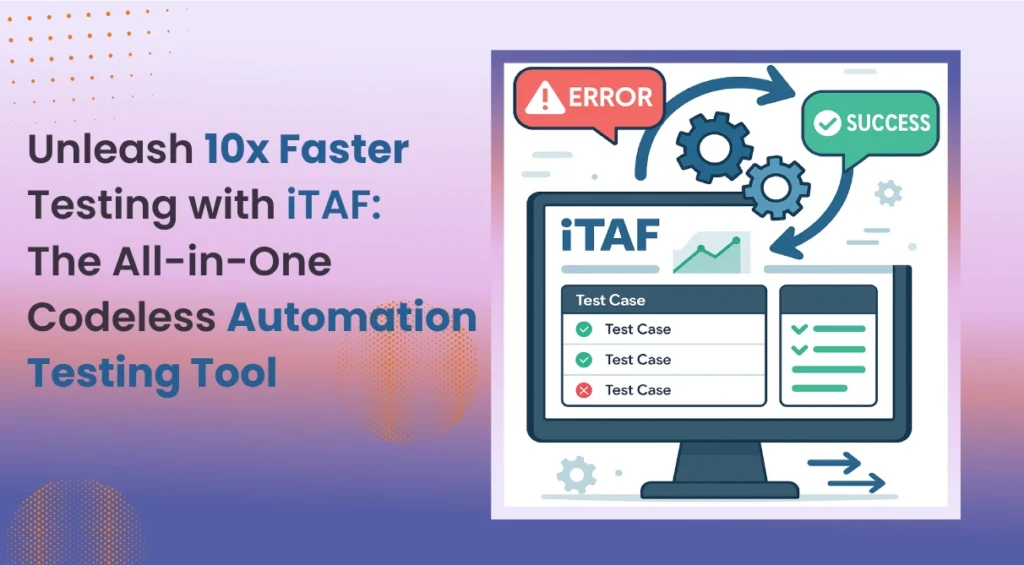
In today’s fast-paced software development environment, ensuring quality and reliability is paramount. Codeless test automation has emerged as a revolutionary approach to software testing, promising to speed up test cycles and reduce the burden on developers. By abstracting away, the complexities of traditional coding, codeless automation tools empower both technical and non-technical users to create and execute robust tests, ultimately leading to higher quality software and faster release cycles. This article will delve into the world of codeless test automation, exploring its fundamental concepts, functionalities, benefits, and its profound impact on the future of software testing.
Understanding Codeless Test Automation

What is Codeless Test Automation?
Codeless test automation represents a paradigm shift in software testing, enabling users to automate test cases without writing a single line of code. This innovative approach leverages visual interfaces, drag-and-drop functionalities, and pre-built test libraries to streamline the testing process. Instead of crafting intricate test scripts, users can define their desired test scenarios through intuitive actions, allowing the automation tool to translate those actions into executable tests. The aim of codeless test automation is to make the process of creating tests more accessible and efficient, significantly reduce test development time, and expand test coverage. This allows for the implementation of automated testing strategies, even when the level of coders is low.
How Codeless Testing Works
The magic behind codeless testing lies in its ability to interpret user actions and facilitate automated testing by translating them into automated test scripts. Typically, codeless automation tools employ a combination of techniques, including visual modeling, natural language processing, and record-and-playback functionality. Users interact with the application under test, performing the actions they want to automate. The codeless test automation tool captures these interactions and translates them into a series of steps that can be replayed automatically. Many tools also offer advanced features such as intelligent element recognition, which allows UI testing to adapt to changes in the user interface without requiring manual updates. The test execution can then be performed automatically, providing immediate feedback on the health of the software.
Common Features of Codeless Automation Tools
Codeless automation testing tools typically offer a range of features designed to simplify and enhance the test creation and maintenance process. A user-friendly interface is essential, allowing users to easily define test steps and manage their test suites. Visual modeling capabilities enable users to design tests using drag-and-drop elements and flowcharts, providing a clear and intuitive representation of the testing process. The ability to record and playback user interactions is another common feature, allowing users to quickly create tests by simply performing the desired actions in the application. Integration with popular testing frameworks and continuous integration/continuous delivery (CI/CD) pipelines is also crucial for seamless integration into the software development lifecycle. These features greatly speed up test creation and enhance the testing process. With the best codeless automation tools or drag and drop features, you can improve test coverage and reduce errors significantly.
The Benefits of Codeless Automation Testing

Efficiency and Speed in Test Execution
One of the most significant benefits of codeless test automation is the marked increase in efficiency and the notable speeding up of test execution. Traditional software testing often involves writing extensive test scripts, a time-consuming process that requires specialized coding skills, unlike codeless tools. Codeless test automation bypasses this requirement, allowing users to automate test cases quickly using visual interfaces and intuitive workflows, making it a preferred test automation solution for writing test scenarios. This leads to a substantial reduction in test development time, enabling teams to focus on other critical aspects of the software development lifecycle. The speed of test cycles and the ability to execute tests more frequently translate into faster feedback loops, which in turn, facilitate faster bug detection and resolution in application testing. Codeless automated testing allows for quicker regression testing, ensuring that new changes do not introduce new defects.
Reducing the Need for Coding Skills
Codeless automation testing democratizes the software testing process by significantly reducing the need for coding skills. Traditionally, software testing relied heavily on skilled developers or specialized test automation engineers who possessed expertise in programming languages. However, with no-code test automation, individuals with limited or no coding experience can actively participate in the testing process. Testers can create test cases and automate test scenarios without grappling with complex code syntax, which enables domain experts, business analysts, and even end-users to contribute to ensuring software quality. This broader participation fosters a more collaborative and inclusive testing environment, leading to improved test coverage and a more comprehensive assessment of the software’s functionality through continuous testing. The use of codeless testing tools helps to bridge the gap between technical and non-technical teams.
Cost-Effectiveness of No-Code Test Automation
The cost-effectiveness of no-code test automation is another compelling advantage that helps organizations update test cases more efficiently. By eliminating the need for specialized coding expertise, companies can significantly reduce their reliance on expensive developers or automation engineers. The reduced test development time translates into lower labor costs and faster time-to-market for software products, particularly when utilizing no-code test automation tools. Furthermore, codeless testing tools often require less maintenance than traditional test scripts, resulting in further cost savings over the long term, which can help streamline their software testing processes. This can be particularly beneficial for small to medium-sized businesses (SMBs) with limited budgets, as it allows them to implement robust testing strategies without incurring substantial costs. No-code automation testing also reduces the risk of human error, leading to more reliable test results and fewer defects in production, further contributing to cost savings through the avoidance of costly rework and bug fixes. The cost-effectiveness of codeless automation testing contributes to a higher return on investment and improved overall profitability in test automation solutions. Benefits of codeless solutions can be noticed almost immediately after implementation. With best codeless automation, savings can be substantial.
Best Practices for Implementing Codeless Testing Tools

Selecting the Right Codeless Automation Tool
Choosing the right no-code testing tool is crucial for successful implementation and can greatly impact your ability to streamline their software testing processes. codeless automation tool is a crucial first step in successfully implementing codeless test automation. Begin by carefully evaluating your specific software testing needs, considering factors such as the types of applications you want to test without writing code. test, the complexity of your test cases, and the skills of your testing team. Look for a codeless automation tool that supports the technologies and platforms relevant to your projects, such as web applications, mobile apps, or API testing. Consider the testing Explore the features offered by different tools, including automation scripts and no-code test automation platforms. test recording capabilities, element recognition accuracy, and integration with your existing top automation testing tools without coding. test management and CI/CD systems. A trial period to automate test Create test cases and assess a variety of test creation and execution methods to improve efficiency. Codeless testing fit is recommended. The choice of an appropriate automation testing tool will impact on the effectiveness of your codeless test automation. These endeavors contribute to improved efficiency in low-code testing frameworks. test coverage.
Integrating Codeless Testing into Your Workflow
Integrating codeless testing seamlessly into your existing workflow is essential for maximizing its effectiveness. Start by identifying the areas where manual testing can be streamlined through codeless tools. Codeless test automation can provide the most value, such as regression testing, end-to-end testing is enhanced through codeless automation testing enables streamlined processes., or smoke tests. Define clear testing objectives and establish a well-defined testing process that incorporates codeless automation. Ensure that your testing team is adequately trained on the codeless automation tool and understands how to implement a robust testing solution. create test cases effectively. Integrate the codeless test automation platform with your CI/CD pipeline to enable automated test execution as part of your build and deployment process, integrating automated tests without writing any scripts. Regularly review and refine your testing process Utilize various strategies to optimize the use of automation testing tools without coding for better results. codeless testing tools and ensure that they align with your overall software development goals. Benefits of codeless solutions can be noticed almost immediately after implementation.
Maintaining and Updating Automated Test Scripts
Maintaining and updating automated test scripts is a critical aspect of effective codeless test automation solutions. codeless test automation. While the best codeless testing tools can enhance productivity, codeless testing can simplify test creation and maintenance, it’s still important to have a strategy for continuous testing to manage changes to your application’s user interface or functionality. Implement a version control system to track changes to your test cases and make it easy to revert to previous versions if needed. Regularly review your test suite to identify and update tests that have become obsolete or are no longer relevant. Take advantage of the features offered by tools like no-code test automation platforms to enhance your testing processes and use visual regression testing tools for better accuracy. testing features, such as automated tests without the need for extensive programming knowledge. offered by your codeless automation tool, such as intelligent element recognition, to minimize the impact of UI changes on your tests. Establish a process for addressing test failures and ensure that tests are updated promptly to reflect any fixes or changes to the application. Proper maintenance ensures that your automated tests remain reliable and effective. With the best codeless automation, maintenance is significantly easier. This saves both money and time in the test automation process.
Future of Codeless Test Automation

Trends Shaping the Future of Automation Testing
Several key trends are shaping the future of automation testing, including the increasing adoption of AI and machine learning, the rise of cloud-based testing platforms, and the growing demand for codeless test automation. AI is being used to enhance test creation, maintenance, and execution, making tests more intelligent and adaptable. Cloud-based testing solutions enable teams to implement codeless tools for more efficient application testing. testing tools offer scalability and flexibility, allowing teams to test Mabl allows users to test their applications across a wide range of environments using low-code testing techniques. Codeless automation testing is gaining traction as organizations seek to democratize testing and empower both technical and non-technical users to participate in the testing process. These trends are driving innovation in the software testing processes and improving the adoption of regression testing tools. testing industry and paving the way for more efficient and effective software testing. No-code automation testing plays a major role in this transformation. The ability to automate test rapidly is crucial for keeping up with the speed of development.
How AI is Enhancing Codeless Testing Tools
Artificial intelligence (AI) is playing an increasingly significant role in enhancing codeless testing tools. AI-powered codeless automation testing can automatically generate test steps, streamlining the testing process significantly. test cases, reducing the manual effort required for codeless test automation solutions. test creation. AI algorithms can analyze application behavior and identify potential defects, improving the accuracy of test Intelligent element recognition capabilities, powered by AI, enable automation scripts to streamline the testing process. tests to adapt to changes in the user interface without requiring manual updates. Self-healing tests, another application of AI, can automatically repair broken tests by identifying and updating element locators. AI is also being used to analyze test execution results and provide insights into the root cause of failures. With best codeless automation, AI is integrated to streamline the testing process. By incorporating AI, codeless test automation becomes more efficient, reliable, and adaptable, furthering the future of software testing. benefits of codeless testing.
Predictions for No-Code Automation Testing Growth
The future looks bright for no-code automation testing, with analysts predicting significant growth in the coming years for no-code test automation platforms. As organizations increasingly embrace digital transformation and seek to accelerate their software development cycles, the demand for codeless automation testing is expected to surge. The growing shortage of skilled coders will further fuel the adoption of no-code test automation, as companies look for ways to empower non-technical users to participate in the testing process. The increasing sophistication of AI-powered automation tools are designed to improve testing efficiency and accuracy. Codeless testing tools will also drive adoption, as these tools become more capable and reliable. It is anticipated that no-code automation testing will become an integral part of the software development lifecycle, enabling organizations to deliver high-quality software faster and more efficiently. Codeless test automation offers significant potential for organizations to leverage automated testing tools. speed up test. Benefits of no-code automated testing are becoming more apparent as the technology matures.
Unleash 10x Faster Testing with iTAF: The All-in-One Codeless Automation Testing Tool

iTAF stands as a revolutionary Codeless automation testing tool developed by ideyaLabs, designed to streamline the testing process across web, mobile, desktop, and API applications. This comprehensive solution enables teams to execute tests across multiple browsers and devices in the cloud, achieving up to 10x faster execution through parallel testing capabilities. With its intuitive no-code interface and centralized dashboard, iTAF empowers both technical and non-technical team members to create, manage, and analyze automated tests efficiently, ultimately accelerating time-to-market while maintaining superior software quality.